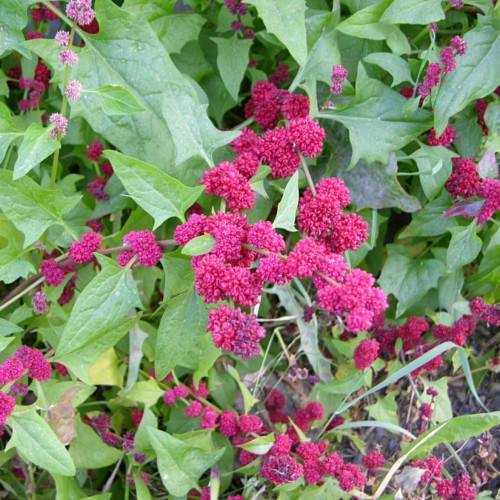
Strawberry-Blite
Blitum capitatum subsp. capitatum
Watering:
Average
Hardiness Zone:
Sun:
full sun,part shade
Fruits:
Fruits Ready In Fall
Edible:
Yes
Leaf:
Yes
Growth Rate:
Low
Drought Tolerant:
Yes
Salt Tolerant:
Yes
Care Level:
Medium
watering
Good King Henry should be watered regularly, once a week or every 2 weeks, depending on the season. During the growing season, from spring to fall, in most climates, Good King Henry should be watered enough for its soil to remain consistently moist, but not soggy. During the winter months, water should be reduced to once a month or even less, depending on the environment. In extremely cold climates, the plant may not need to be watered at all during the winter.
sunlight
Good King Henry plants need full sun for a minimum of 4 hours each day, and prefer as much as 6 to 8 hours each day. These plants should not be grown in overly shady conditions as they can become weak and stunted. The best time of day to expose Good King Henry to adequate amounts of sunlight is during the morning hours when the sun is not excessively hot. This helps prevent the plant from going into shock due to the sudden temperature change.
pruning
Good King Henry plants should be pruned in the late winter or early spring before the plant starts growing for the season. All dead, damaged, and old flower stems should be pruned away at this time. Also, lighter pruning of fresh stems should be done if the plants have become too large in previous seasons. This can help to invigorate the plants and encourage a more compact growth form. The main pruning activity should be done in mid-summer after flowering is complete. This helps to maintain the compact shape of the plant and also encourages fresh growth and a more consistent flowering cycle. Pruning should be done selectively, based on the overall size and shape of the plant. No more than 1-third of the stems should be pruned each year, and individual stem length should be considered.
